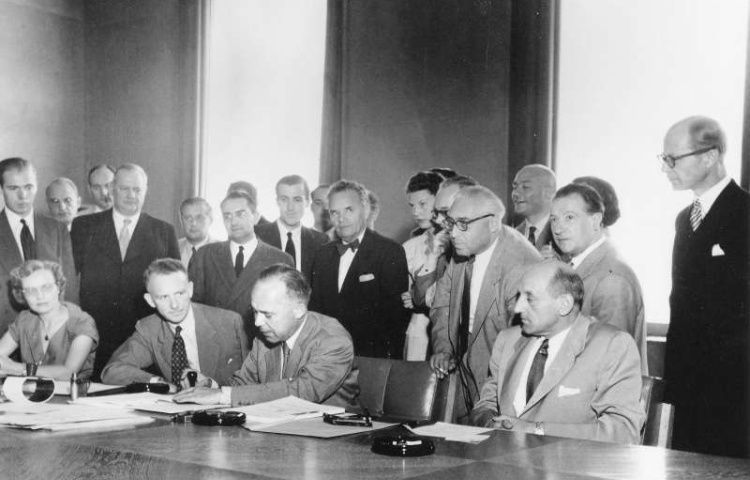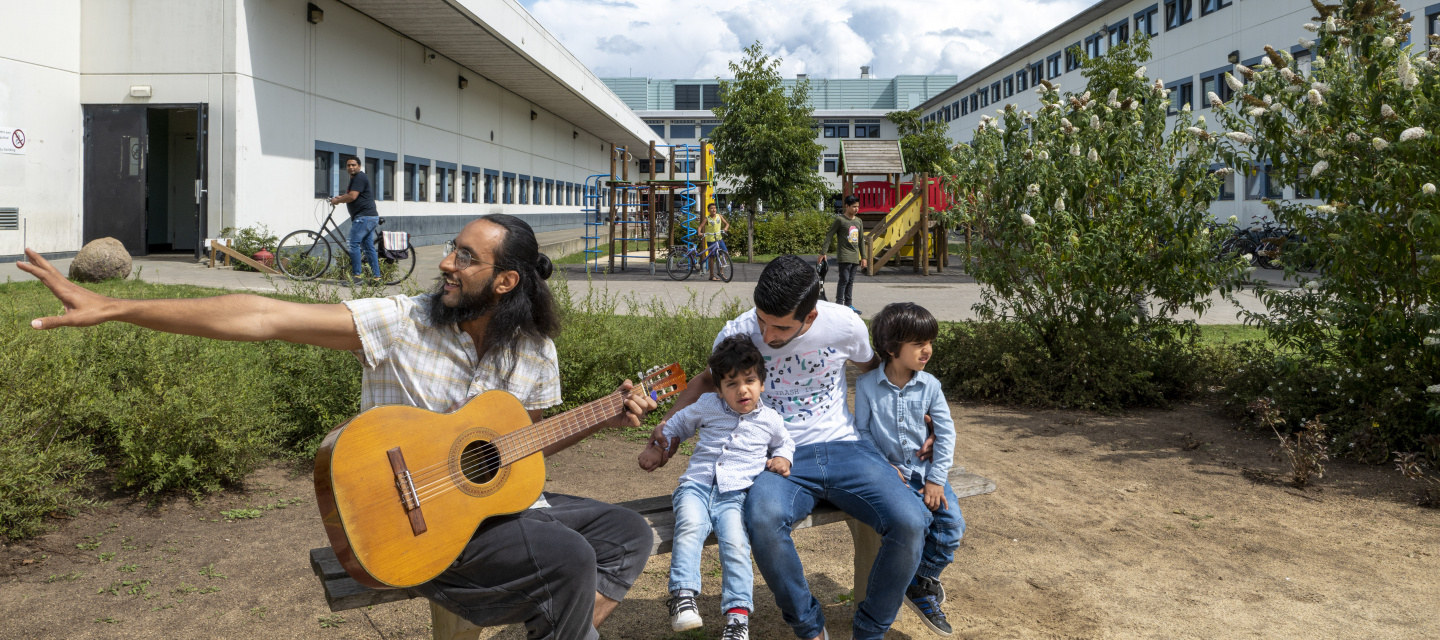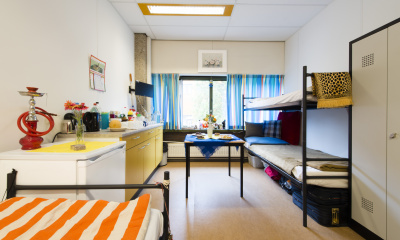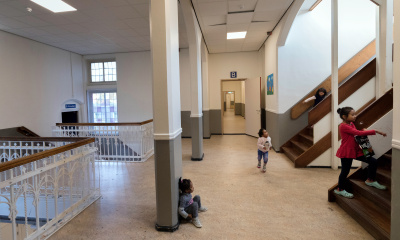This convention stipulates when someone is eligible for a refugee status and is therefore entitled to protection. By now, more than 150 countries have become parties to this convention: they recognise the right refugees have to protection.
The Dutch asylum policy is also based on this international Refugee Convention. The Immigration and Naturalisation Service (IND) carries out the asylum policy and processes all asylum applications.

Geneva Convention
In 1951, the Refugee Convention of the United Nations took place in Geneva. There, more than 100 countries signed the Refugee Convention.
This convention stems from the Universal Declaration of Human Rights and was initially meant for people who had fled from events during and after the Second World War.
The Dutch asylum procedure
Registration
An asylum seeker entering the Netherlands reports to the Aliens Police (AVIM) for identification and registration. This can, for instance, be done in Budel and Ter Apel. When doing so, he or she also signs for the asylum application. The AVIM searches the asylum seeker's luggage and establishes their identity. Immediately after this registration, asylum seekers will be provided shelter in the central reception centre of the COA.
In the days after registration, asylum seekers will get a medical intake by the Health Centre for Asylum Seekers (GZA). Most asylum seekers will also be tested for tuberculosis by the Municipal Health Service (GGD). Next, the IND will carry out the registration interview.
Schiphol Airport
Asylum seekers arriving at Schiphol Airport report to the Royal Netherlands Marechaussee (KMar). Subsequently, they move to a COA reception centre. Asylum seekers who apply for asylum immediately at Schiphol Airport will stay in detention in the Schiphol Judicial Complex while the asylum application is being processed.
The general asylum procedure
After the registration interview, an asylum seeker moves to a process reception centre close to an IND office. There he or she will prepare themselves for the processing of their asylum application during the rest and preparation period (rvt). Next, they will go through the general asylum procedure.
During the general asylum procedure, the IND investigates whether someone has 'reason to fear war, persecution, or inhumane treatment.' If this is the case, he or she is entitled to a refugee status. The IND takes this decision.
Volunteers of the Dutch Council for Refugees can support the asylum seeker during their procedure. The Dutch Council for Refugees has a consultation hour at every reception centre
The asylum process – who does what
Asylum seekers deal with various organizations during the asylum process. For example, the Immigration and Naturalisation Service (IND) processes the asylum application. The Dutch Council for Refugees (VluchtelingenWerk) provides information about the asylum procedure among other things. COA collaborates with all these organisations.
The asylum procedure
Shelter, guidance and support
-
registration
The asylum procedur
Asylum applications must be filed with the Immigration and Naturalisation Service (IND). The Aliens Police (AVIM) carries out the identification and registration of each applicant. Next, a medical intake is carried out by the Health Centre for Asylum Seekers (GZA). Asylum seekers from countries with a high risk of tuberculosis will be given a TB test by the Municipal Health Service (GGD).
-
registration
Asylum seekers stay in a central reception centre. They are provided with meals, accommodation and access to any necessary medical care. COA staff check if asylum seekers need special attention or counselling and detect if, for example, there are issues regarding to human trafficking and migrant smuggling.
-
registration interview
The asylum procedure
In the days after registration, the IND will carry out the registration interview. An impartial interpreter is present during this interview.
-
registration
During this step, asylum seekers still stay in a central reception centre. The accommodation and counselling by the COA are the same as during the previous step in the asylum process.
-
rest and preparation period
The asylum procedure
During this time, asylum seekers can prepare themselves for the interviews with the IND. Experts examine whether they are mentally and physically fit for the interview. The Dutch Council for Refugees (VWN) provides information about the asylum process and asylum seekers meet the lawyer designated for them by the Legal Aid Board (RvR).
-
registration
Asylum seekers are provided accommodation in a COA process reception centre. Here they receive an allowance for food and are given access to any necessary medical care via the GZA. The COA also gives them practical information about living in the Netherlands and in a reception centre (AZC). Asylum seekers with good prospects of getting a permit will now start their civic pre-integration.
-
general asylum procedure
The asylum procedure
Asylum seekers further motivate their asylum application in interviews with the IND. During these interviews, an impartial interpreter is present and if requested a volunteer of the Dutch Council for Refugees.
-
registration
During this step, asylum seekers still stay in a COA process reception centre. The reception and counselling by the COA are the same as during the previous step in the asylum process.
-
Decision
The asylum procedure
There are now 3 possibilities. The IND:
- grants a temporary residence permit
- rejects the asylum application
- needs more time for the decision; the applicant will then enter into the extended asylum procedure.
The Repatriation and Departure Service (DT&V) subsequently coordinates the actual departure of rejected asylum seekers.
-
registration
From the IND's decision about the asylum application, the shelter, support and guidance are provided in a reception centre. To those who have been granted an asylum status, the COA offers civic integration activities. The counselling of rejected asylum seekers is aimed at departure.
Read more about the shelter, support and guidance provided by the COA
After the general asylum procedure
If the IND has decided that an asylum seeker is entitled to a refugee status, he or she will be granted a temporary residence permit that is valid for 5 years. He or she is then the holder of a refugee status. Holders of a refugee status are entitled to housing. They must also take a civic integration examination. Holders of a refugee status continue living in a reception centre until they are allocated housing by a municipality.
Extended asylum procedure
Sometimes the IND needs more time to take a decision on an asylum application. The asylum seeker will then move on to the extended asylum procedure. During this procedure he or she will keep living in the reception centre.
Return and departure
Asylum seekers whose application has been rejected by the IND are usually entitled to 28 more days of reception by the COA. This is the statutory departure period. In this period, they can prepare for their departure. They are supported in this by various organisations. The Repatriation and Departure Service manages this process.
Repeat application
In some cases, rejected asylum seekers can file another asylum application, for example when there are new facts that have not been considered in the processed application. Once such a repeat application has been made – and not earlier – the applicant may be eligible for reception again.



